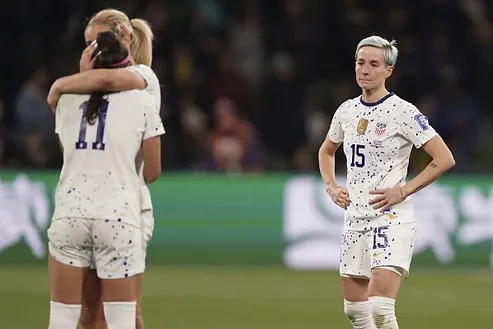By: Hannah Zhang
One by one, the players of the 2022 Men’s World Cup lined up to take their penalties. As coaches and fans alike held their breath, the players began taking their penalties. After Mbappe and Messi scored their matching goals, France missed its next two shots, and Hugo Lloris, the French goalkeeper, failed to keep Argentina out of the goal. This resulted in the first Argentinian World Cup title since 1986.
The primary question surrounding every soccer game decided by penalty shootouts is: What leads to a successful shot? This involves various factors, requiring both the goalkeeper and the shooter to make game-changing decisions.
On average, it takes around 400 milliseconds for the soccer ball to reach the goal, roughly the time it takes to blink. However, the human visual reaction time is closer to 200 milliseconds, while the dive itself takes around 500 milliseconds. This compels the goalkeeper to pre-determine the direction in which they will dive.
The crucial decision a goalkeeper faces to make a save is whether to rely on visual cues from the shooter or to provide more time for their dive. For instance, a goalkeeper might choose to wait and gather more visual cues from the shooter to enhance the accuracy of their save. However, this strategy can sometimes be misleading, as some shooters intentionally provide false cues to ensure their success.
This brings us to the dilemma a shooter confronts to get the ball into the goal. A shooter must decide between aiming for accuracy or speed. Sacrificing accuracy will result in a faster kick, making it challenging for the goalkeeper to react, but it may lead to missed shots. On the other hand, sacrificing speed gives the goalkeeper more time to determine their diving direction.
Although scoring a goal is generally considered easier than missing one, most of the pressure falls on the kicker. Due to the immense difficulty of blocking a goal, goalkeepers are celebrated as ‘heroes’ if they save a goal, without facing psychological repercussions if they miss. Expectations for the shooter are often higher, as 80% of shots are expected to find the net.
Furthermore, the direction in which the shooter is looking during their shot plays a significant role. Shooters tend to aim where they are looking. Research indicates that during practice, when in-game pressure is eliminated, shooters gaze at their target. However, in a high-pressure game, shooters often focus on the goalkeeper or an obstacle, leading to fewer successful shots.
At times, if the aforementioned factors are not at play, a goalkeeper might attempt to distract the shooter by waving their arms, encouraging the shooter to aim down the middle—right into the goalkeeper’s grasp.











